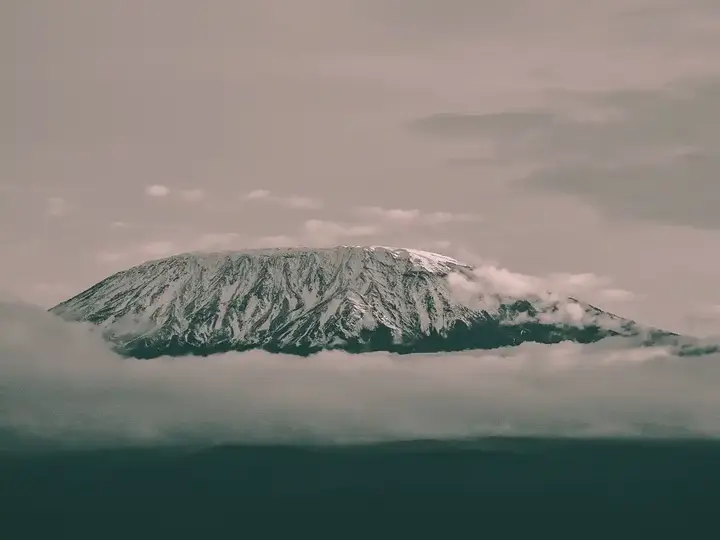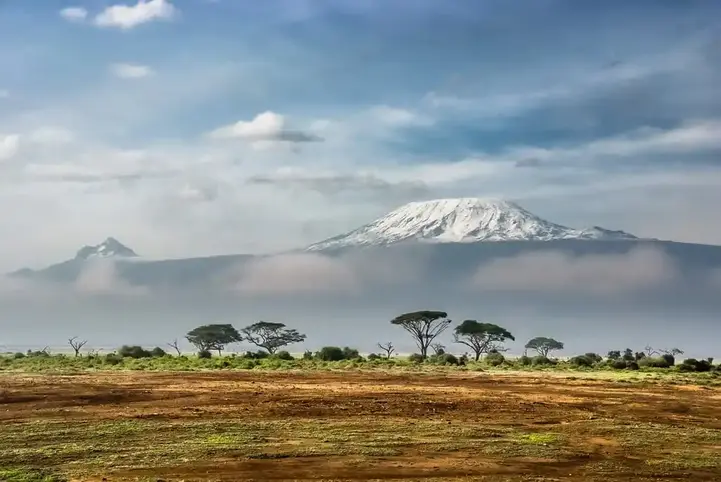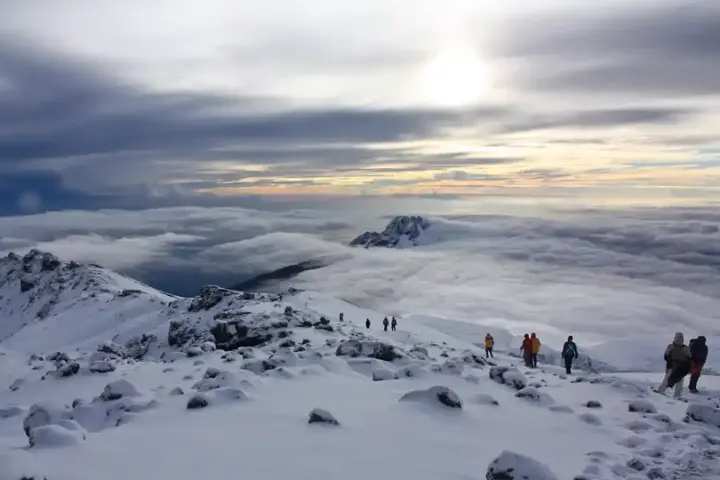Beginner's Guide to Climbing Mount Kilimanjaro
Mount Kilimanjaro is located in northeastern Tanzania, near the Kenyan border. It is located about 140 kilometers south of Nairobi (Kenya's capital), and 500 kilometers northeast of Dodoma, the capital of Tanzania.
Show key points
- Mount Kilimanjaro is situated in northeastern Tanzania, near the border with Kenya, approximately 140 km from Nairobi.
- To reach Mount Kilimanjaro, travelers typically fly into Kilimanjaro International Airport and transfer to Arusha or Moshi, where most climbs begin.
- July through October offers the driest and most popular climbing conditions, while May to June is ideal for those seeking fewer crowds with similar weather.
- ADVERTISEMENT
- Depending on the route, climbing Mount Kilimanjaro can take anywhere from five to nine days, with gradual ascent crucial for proper acclimatization.
- Essential gear for the climb includes thermal layers, waterproof clothing, tested hiking boots, and a small medical kit to handle extreme cold and physical exertion.
- Despite being considered a walkable mountain, Mount Kilimanjaro presents serious challenges due to altitude, weather shifts, and physical demands.
- Travelers should prepare for climatic variability on the mountain, from hot and humid base areas to summit temperatures as low as -30°C.
Where is Mount Kilimanjaro located?

Mount Kilimanjaro is located in northeastern Tanzania, near the Kenyan border. It is located about 140 kilometers south of Nairobi (Kenya's capital), and 500 kilometers northeast of Dodoma, the capital of Tanzania.
How do I get to Mount Kilimanjaro?

To get to Mount Kilimanjaro, fly to Kilimanjaro International Airport (KIA). There are many direct flights from Europe (from Amsterdam and Zurich) and the Middle East (Doha and Turkey). But you'll likely need to fly through another African destination – Dar es Salaam, Addis Ababa and Nairobi are your best bet. The Mount Kilimanjaro climb usually departs from one of two towns: Arusha, to the southwest of the mountain, and Moshi, just to the south. It takes about an hour and 80 minutes to reach Moshi. The most common way to transfer is by taxi or a pre-booked shuttle service - but in many cases, the tour operator will meet you at the airport.
Recommend
When is the best time to climb Mount Kilimanjaro?

Mount Kilimanjaro is located in Kilimanjaro National Park. It is located 300 kilometres south of the equator – Tanzania is a distinctively tropical region, with rainy seasons and a changing dry season over a hot, humid climate. So when is the best time to climb Mount Kilimanjaro? Let's take a look at the seasons and the season of climbing Mount Kilimanjaro. Tanzania experiences two rainy seasons: a short season from November to mid-December and a long rainy season from March to May. The roads on Mount Kilimanjaro can be wet and muddy underfoot during these seasons. If you don't care about the seasonal weather and care more about solitude, you may prefer these times to climb where there are far fewer people. Although intense humidity is expected. July to October is peak time on the mountain, especially because it coincides with European summer holidays. This time window is dry and cold more than Christmas months, but get ready for some cooler nights. If you want to enjoy similar weather, but with far fewer people, mid-May to June is the perfect time for you. It's the run-up to the holidays, but it's still the peak season for climbing. The period from December to February is warmer and has good visibility. However, the short rainy season can extend to December, so it may still rain. These months also coincide with the Christmas holidays, so it can still be crowded.
How long does it take to climb Mount Kilimanjaro?

There are seven ways to get to Mount Kilimanjaro, each taking between five and nine days. However, it is very important not to rush up as it may reduce your success rate! The reason for this is that you need to ensure time for your body to acclimatize to high altitudes. A slow, steady ascent gives your body time to adjust to higher altitudes – where there is less oxygen in the air – if you race to the top, you're at risk of developing altitude sickness and having to leave the mountain.
What clothes and equipment do you need?

Although Mount Kilimanjaro is considered a "mountain that can be climbed on foot", don't be fooled into thinking it's easy. Preparation is key, especially if you're on a shorter timeframe or a harder route. Luggage carriers can carry food and cooking utensils as well as your own sleeping system. Most tour companies have plenty of spare equipment if you need it, but as always, tried and tested personal equipment is priceless. Pack as you would any long-haul multi-day high-altitude trips, including the following:
• Good waterproof and breathable walking shoes and lots of thick socks. They should be tried and tested before starting the trip because discovering that they are inappropriate and uncomfortable after a couple of days is the last thing you want.
• Good waterproof backpack and humidification bag - a bag large enough to hold your personal items (camera, headlight, clothes, and food served to you for the day).
• Thermal clothing for cold nights (and some days) while walking.
• Waterproof and windproof trousers and cover, even if you go hiking in dry seasons – the weather can get cold very quickly.
• Quick-drying clothes and trousers. Zipper trousers are great for the first and last days of flights.

• Sweaters are essential when temperatures drop. It is easy to forget these elements while sweating at the base of the mountain in a tropical country. The top can be as cold as -30 ° C.
• Hat and gloves.
• Sunscreen and sunglasses are things that most people forget. You may be very exposed to the sun on some days and don't want to burn because of your time on the mountain.
• Changing warm clothes at night is a great idea. They help you stay warm and divide the time you need to spend in hiking clothes.
As with any trip, bring basic toiletries like toothbrushes and toothpaste, but not so much that you struggle to carry the weight you've packed.
• Head lamp for evening and summit night.
• Hiking snacks – many of them! Power bars are a lightweight, high-calorie option.
• A small medical kit with basics such as bandages and a second skin can be very helpful. Pimples are the last thing you need!








